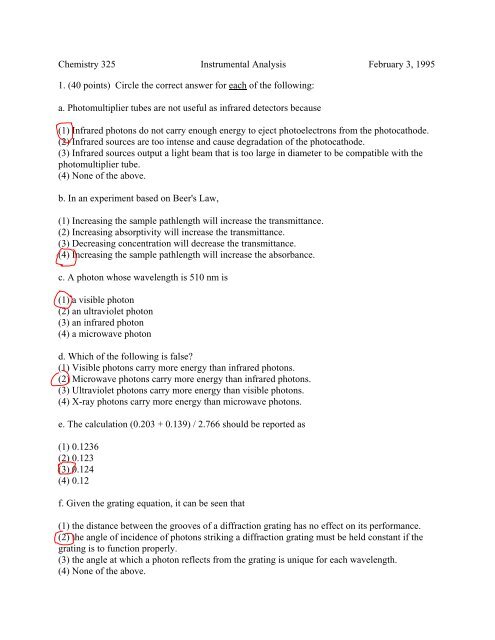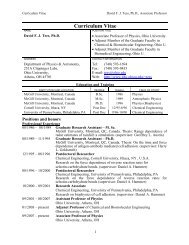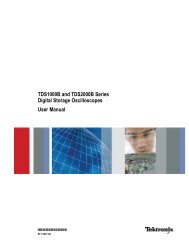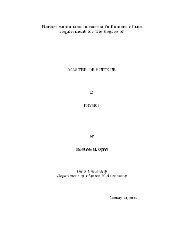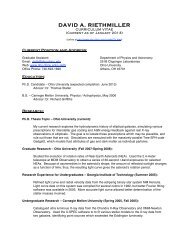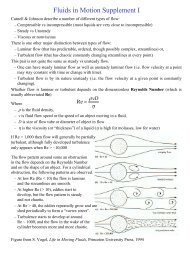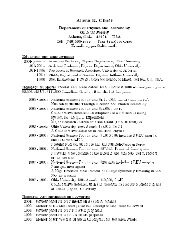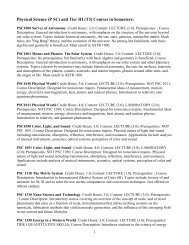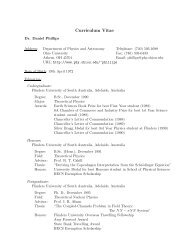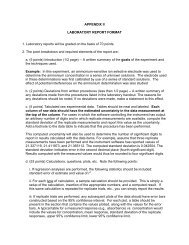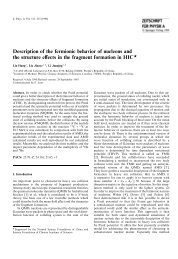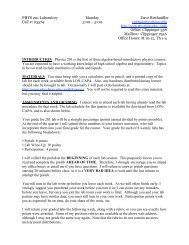Chemistry 325 Instrumental Analysis February 3, 1995 1 Exam 1 ...
Chemistry 325 Instrumental Analysis February 3, 1995 1 Exam 1 ...
Chemistry 325 Instrumental Analysis February 3, 1995 1 Exam 1 ...
You also want an ePaper? Increase the reach of your titles
YUMPU automatically turns print PDFs into web optimized ePapers that Google loves.
<strong>Chemistry</strong> <strong>325</strong> <strong>Instrumental</strong> <strong>Analysis</strong> <strong>February</strong> 3, <strong>1995</strong><br />
1. (40 points) Circle the correct answer for each of the following:<br />
a. Photomultiplier tubes are not useful as infrared detectors because<br />
(1) Infrared photons do not carry enough energy to eject photoelectrons from the photocathode.<br />
(2) Infrared sources are too intense and cause degradation of the photocathode.<br />
(3) Infrared sources output a light beam that is too large in diameter to be compatible with the<br />
photomultiplier tube.<br />
(4) None of the above.<br />
b. In an experiment based on Beer's Law,<br />
(1) Increasing the sample pathlength will increase the transmittance.<br />
(2) Increasing absorptivity will increase the transmittance.<br />
(3) Decreasing concentration will decrease the transmittance.<br />
(4) Increasing the sample pathlength will increase the absorbance.<br />
c. A photon whose wavelength is 510 nm is<br />
(1) a visible photon<br />
(2) an ultraviolet photon<br />
(3) an infrared photon<br />
(4) a microwave photon<br />
d. Which of the following is false?<br />
(1) Visible photons carry more energy than infrared photons.<br />
(2) Microwave photons carry more energy than infrared photons.<br />
(3) Ultraviolet photons carry more energy than visible photons.<br />
(4) X-ray photons carry more energy than microwave photons.<br />
e. The calculation (0.203 + 0.139) / 2.766 should be reported as<br />
(1) 0.1236<br />
(2) 0.123<br />
(3) 0.124<br />
(4) 0.12<br />
f. Given the grating equation, it can be seen that<br />
(1) the distance between the grooves of a diffraction grating has no effect on its performance.<br />
(2) the angle of incidence of photons striking a diffraction grating must be held constant if the<br />
grating is to function properly.<br />
(3) the angle at which a photon reflects from the grating is unique for each wavelength.<br />
(4) None of the above.


